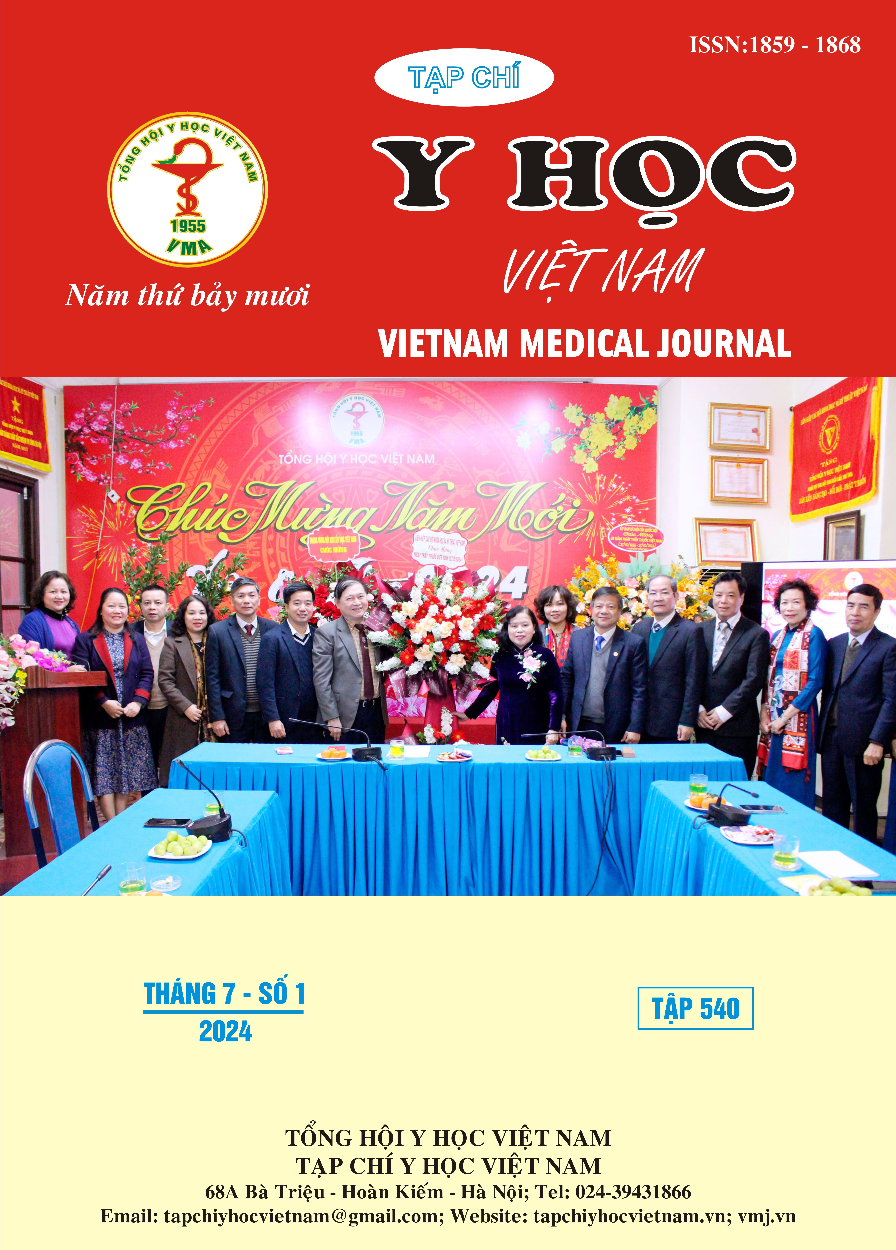EVALUATION OF OUTCOMES AFTER 5 YEARS SURGICAL TREATMENT OF ACETABULAR FRACTURES IN VIET DUC HOSPITAL
Main Article Content
Abstract
Research objective: Evaluate the results after 5 years of bone fusion surgery to treat acetabular fractures at Viet Duc Friendship Hospital. Research methods: Retrospective descriptive study of 36 patients undergoing acetabular fusion surgery from January 2015 to December 2017. Results: 36 patients were studied with an average age of 38.36±12.5 (20-70 years old), the most common age group is the group under 40 years old, accounting for 61.11%, male/female ratio. = 3.5/1. Traffic accidents are the main cause of injury, accounting for 52.1%. The average time from accident to surgery is 8.08 days, with the majority of patients having surgery in the first week, accounting for 50%. The group of simple reduced fractures is predominant with 77.78% with fractures of the posterior wall of the acetabulum accounting for the highest proportion. Hip joint function after surgery achieved very good and high results at 91.66%. Postoperative complications included sciatic nerve paralysis in 3 patients and ectopic ossification in 2 patients. Conclusion: Acetabular fusion surgery is a treatment method that achieves good results for the majority of patients with increasingly improved complication rates.
Article Details
Keywords
: acetabular fracture, hip function
References
2. Briffa, N., Pearce, R., Hill, A. M. & Bircher, M. Outcomes of acetabular fracture fixation with ten years’ follow-up. The Journal of Bone and Joint Surgery. British volume 93-B, 229–236 (2011).
3. Mardanpour, K., Rahbar, M., Rahbar, M., Mardanpour, N. & Mardanpour, S. Functional Outcomes of Traumatic Complex Acetabulum Fractures with Open Reduction and Internal Fixation: 200 Cases. Open Journal of Orthopedics 6, 363–377 (2016).
4. Liebergall, M. et al. Acetabular Fractures: Clinical Outcome of Surgical Treatment. Clinical Orthopaedics and Related Research® 366, 205–216 (1999).
5. Madhu R., Kotnis R., Al-Mousawi A., et al. (2006). Outcome of surgery for reconstruction of fractures of the acetabulum. The time dependent effect of delay. J Bone Joint Surg Br, 88(9), 1197-203.
6. Hirvensalo E., Lindahl J., and Kiljunen V. (2007). Modified and new approaches for pelvic and acetabular surgery. Injury, 38(4), 431-41.
7. Murphy, D., Kaliszer, M., Rice, J. & McElwain, J. P. Outcome after acetabular fracture: Prognostic factors and their inter-relationships. Injury 34, 512–517 (2003).
8. Matta J.M. (1996). Fractures of the acetabulum: accuracy of reduction and clinical results in patients managed operatively within three weeks after the injury. J Bone Joint Surg Am, 78(11), 1632-45.


